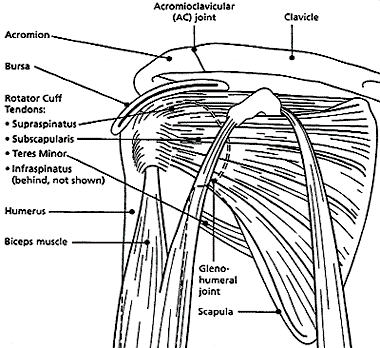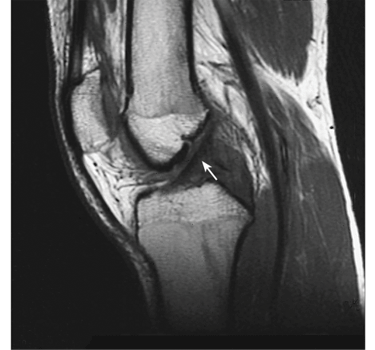Can I Get Social Security Disability Benefits for Arthritis or Joint Damage?
- How Does the Social Security Administration Decide if I Qualify for Disability Benefits Due to Joint Problems?
- About Joint Pain and Joint Damage
- Winning Social Security Disability Benefits for Joint Dysfunction by Meeting a Listing
- Residual Functional Capacity Assessment for Joint Dysfunction
- Getting Your Doctor’s Medical Opinion About What You Can Still Do
Winning Social Security Disability Benefits for Joint Dysfunction by Meeting a Listing
To determine whether you are disabled at Step 3 of the Sequential Evaluation Process, the Social Security Administration will consider whether your joint problems are severe enough to meet or equal the listing for joint dysfunction. The Social Security Administration has developed rules called Listing of Impairments for most common impairments. The listing for a particular impairment describes a degree of severity that Social Security Administration presumes would prevent a person from performing substantial work. If your joint pain or immobility is severe enough to meet or equal the listing, you will be considered disabled.
The listing for major dysfunction of a joint is 1.02. It has 2 parts: A and B. You will meet the listing and be eligible for Social Security disability benefits if you meet either of the two parts.
Major Joint Dysfunction Is Required by Both Parts of Listing 1.02
Both parts of this listing require you to have:
- Major dysfunction of a joint due to any cause;
- Characterized by gross anatomical deformity (e.g., subluxation, contracture, bony or fibrous ankylosis, instability); and
- Chronic joint pain and stiffness; with
- Signs of limitation of motion or other abnormal motion of the affected joint(s); and
- Findings on appropriate medically acceptable imaging of joint space narrowing, bony destruction, or ankylosis of the affected joint(s).
Subluxation and Instability
Subluxation refers to a joint slipping out of alignment. Joint instability means inability to maintain alignment. It may result from advanced arthritis and cause difficulty walking as well as the risk of suddenly falling while trying to walk.
Ankylosis and Contracture
Ankylosis means fixation or immobilization of a joint. If arthritis is sufficiently advanced, bone may grow fusing both sides of a joint together, a condition known as bony ankylosis, preventing joint movement. In fibrous ankylosis the joint is fixed because of hardening of tissues (ligaments, tendons, skin) around the joint, as a result of traumatic damage, disease, or disuse. In other words, tissues that normally have some elasticity degenerate into a less resilient state. A bony ankylosis will eventually result in an additional fibrous ankylosis due to disuse of soft tissues. However, a fibrous ankylosis can exist without any bony ankylosis of a joint.
There is no meaningful difference between contracture and fibrous ankylosis. Contracture refers to muscle or other soft-tissue damage (from disuse, scarring, or disease) that holds a limb in an abnormal position that strongly resists movement.
Gross Deformity
Gross deformity is not confined to structural abnormalities that are obvious and easy to see, such as a large and distorted knee joint with a contracted (fixed) and atrophied (withered) leg.
Instability might only be obvious by touching the knee joint and moving it around. In other joints, such as the hip, the joint itself cannot be seen, but effects of deformity, such as limited range of motion, can be seen during a physical examination.
Except in the most extreme circumstances, a physical examination alone is not sufficient to assess joint deformity. Imaging studies (e.g., X-rays) sometimes show that a joint is far more damaged than it appears from a physical. The opposite is also true. When the soft tissues around a joint (see Figure 7 below) are fixed in a contracture or paralyzed, that joint can be as non-functional as one in which the bony tissues have been damaged or destroyed. Therefore, it is also wrong to rely on X-rays alone in determining that a joint is functional. Both physical examination and joint imaging are critical to accurate assessment.

Figure 7: Soft tissues of the shoulder joint.
Range of Motion
To meet the listing, you must have complaints of joint pain and stiffness with loss of motion in the affected joint, or some other type of abnormal joint movement.
Even if you have a full range of normal motion in a joint, you may still meet this listing. Movement in abnormal directions can greatly impair function. Joint instability is the important criterion and subluxation is one thing that can produce such instability. In fact, damage to the ligaments that normally stabilize the knee can result in abnormal forward (anterior), backward (posterior), or sideways (lateral) motion caused by lax ligaments or tearing without gross subluxation of the joint. The listing makes no requirement as to the nature or degree of abnormal movement that has to be present. The presence or absence of instability should always be reported as a standard part of the physical examination of joints.
A joint with a small amount of movement on physical examination should not necessarily be classified as lacking the ankylosis required by the listing. For example, the examining doctor might be able to move a limb a few degrees but the joint is essentially immovable (ankylosed) for all practical functional purposes. Reasonable medical judgment would not deny such a claimant under this listing, if all other criteria were satisfied. The listing does not specify “absolute” fixation of the joint. Even if one took that interpretation, allowance on the basis of equivalent severity might be appropriate.
Appropriate Medically Acceptable Imaging Techniques
An imaging technique, such as X-ray or MRI (see Figure 8 below), should show joint abnormalities. The technique should be “appropriate.” For example, a plain X-ray might be sufficient to rule out a bony arthritic process, but would not show soft tissue damage (e.g., fibrous ankylosis) that would be visible on a MRI. The listing specifically requires evidence of joint involvement (“joint space narrowing, bony destruction, or ankylosis”), whether or not there is soft tissue damage resulting in instability. This is a critical point because a purely soft-tissue injury such as damage to knee ligaments in a sports or other acute injury, even if unrepaired surgically and producing abnormal motion, would still fail to satisfy the listing because there would be no joint involvement as required in the imaging specifications. On the other hand, fibrous ankylosis of a joint could qualify as a gross deformity under the listing even though there is no direct bony damage to the joint.

Figure 8: An MRI image of a normal knee.
Meeting Social Security Administration Listing 1.02A for Joint Dysfunction
You will meet Listing 1.02A if you have major joint dysfunction and involvement of one major peripheral weight-bearing joint (i.e., hip, knee, or ankle), resulting in inability to ambulate effectively.
Inability to ambulate effectively means an extreme limitation of the ability to walk. Ineffective ambulation is defined generally as having insufficient lower extremity functioning to permit independent ambulation without the use of a hand-held assistive device that limits the functioning of both upper extremities. To ambulate effectively, you must be capable of sustaining a reasonable walking pace over a sufficient distance to be able to carry out activities of daily living. You must have the ability to travel without companion assistance to and from a place of employment or school. Therefore, examples of ineffective ambulation include, but are not limited to:
- The inability to walk without the use of a walker, two crutches or two canes;
- The inability to walk a block at a reasonable pace on rough or uneven surfaces;
- The inability to use standard public transportation;
- The inability to carry out routine ambulatory activities, such as shopping and banking; and
- The inability to climb a few steps at a reasonable pace with the use of a single hand rail.
The ability to walk independently about your home without the use of assistive devices does not, in and of itself, constitute effective ambulation.
Meeting Social Security Administration Listing 1.02B for Joint Dysfunction
You will meet Listing 1.02A if you have major joint dysfunction and involvement of one major peripheral joint in each upper extremity (i.e., shoulder, elbow, or wrist-hand), resulting in inability to perform fine and gross movements effectively.
Inability to perform fine and gross movements effectively means an extreme loss of function of both upper extremities; i.e., an impairment that interferes very seriously with your ability to independently initiate, sustain, or complete activities. To use your upper extremities effectively, you must be capable of sustaining such functions as reaching, pushing, pulling, grasping, and fingering to be able to carry out activities of daily living. Therefore, examples of inability to perform fine and gross movements effectively include, but are not limited to:
- The inability to prepare a simple meal and feed oneself;
- The inability to take care of personal hygiene;
- The inability to sort and handle papers or files; and
- The inability to place files in a file cabinet at or above waist level.
Continue to Residual Functional Capacity Assessment for Joint Dysfunction.
Go back to About Joint Pain and Joint Damage.

